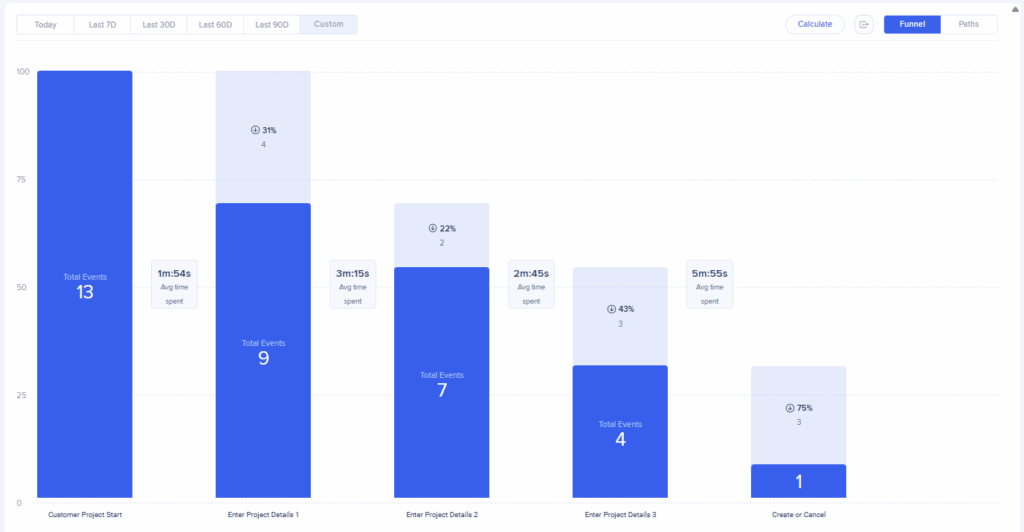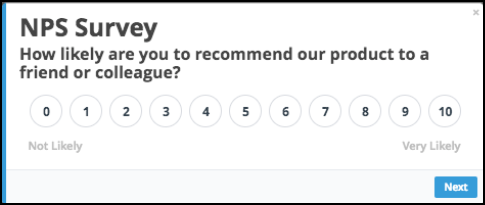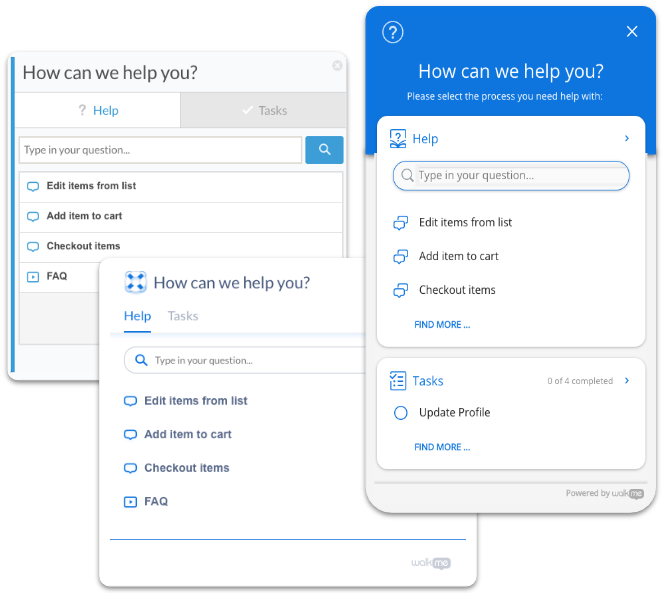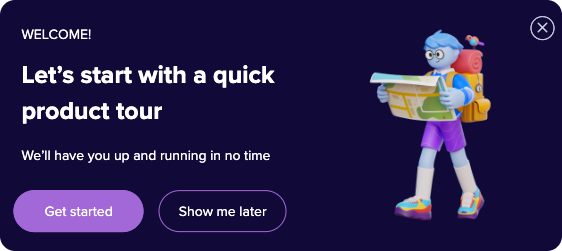Welcome to the
WalkMe Help Center
Please log in to continue

Please log in to continue

When customers don't see value quickly, they leave. A confusing product experience, lack of contextual support, or inconsistent engagement after onboarding can create friction that leads to churn. Poor onboarding often leads to drop-offs; if new users can't complete setup or their first key actions, they never progress to adoption. And without continued guidance, even successfully onboarded users may disengage later. Both scenarios represent missed revenue and prevent users from realizing the full value of your product.
WalkMe can help change that. This guide shows how to use WalkMe to pinpoint friction, personalize the customer experience, and keep users engaged - from their first login through long-term usage. We'll walk through each step using our 4 Ps framework for business value alignment: Problem, Possible, Probable, and Provable.
What are the challenges and issues your users face?
Onboarding: Users who struggle to onboard or find ongoing value in your product won't stick around. Long learning curves, inconsistent product usage, and a lack of proactive support create a gap between adoption and retention. That gap leads to higher support costs, reduced product utilization, and ultimately, churn.
Retention: Even users who onboard successfully may lose momentum without reinforcement. If your team doesn't identify friction or act on signals of disengagement, users may stop using your product before they ever find value.
What should you focus on to address this problem, and how might you solve it?
Focus on identifying friction that prevents users from getting value at every stage of their journey. Look for opportunities to reduce the learning curve during onboarding, reinforce desired behaviors, and support long-term engagement.
Start by answering these questions:
For onboarding:
For retention:
The answers will help you identify moments of friction: where users abandon key workflows, make repeated mistakes, or stop returning altogether. From there, you can design WalkMe interventions that help users complete onboarding milestones, learn new features, and reinforce best practices. Continue reading for tactical guidance on how to design and build those solutions.
Before building your first WalkMe solution, start by diagnosing where users lose momentum. Use WalkMe Insights to track critical user workflows, especially those tied to onboarding or core value delivery. Set up Tracked Events and Engaged Elements for key actions, then collect at least 30 days of data to establish a baseline. Without baseline data, it becomes challenging to demonstrate the value and effectiveness of your content over time. Once you have baseline data, Flow Analytics shows whether users successfully complete desired actions, and if not, what actions they take instead. For example, if your funnel reveals that most users abandon your onboarding flow at step four, and the path shows that they immediately navigate to your support site, that step is likely a source of confusion. You'll know that step four is a candidate for WalkMe guidance to reduce friction.

To go further, enrich your user data by integrating WalkMe with tools like Salesforce and Gainsight. Segmenting your users by company size, contract value, or other key attributes helps you better understand which users disengage and when. With a more holistic view of your end users, you can better prioritize which cohorts to target and which journeys to fix first.
Usage data shows you what users are doing. To understand why, you need to ask them. Start with in-app Surveys to gather feedback when users drop off before completing key steps in a workflow. Keep your questions short and specific like “What prevented you from completing this step?” or “What's missing from this onboarding guide?” to uncover actionable insights. For a broader view of customer sentiment, launch a Net Promoter Score (NPS) survey.

In addition to digital surveys, WalkMe can also help you connect directly with users for feedback. Use segmentation to target specific users with a Launcher and Shuttle that opens a calendar link to book time with someone from your organization. For example, after a new user provides a low score or negative feedback in the onboarding survey, invite them to schedule a call for more detailed input. If you have power users of a specific feature that's due for an overhaul, invite them to a user interview to explore potential improvements. This creates a feedback loop that reduces friction and strengthens your customer relationships.
Once you know where users struggle the most, deploy WalkMe guidance directly into those workflows.
To effectively onboard and retain users, you must give them the right support at the right time. One of the best ways to do so is to create a centralized help hub using the WalkMe Menu. Whether for web or mobile, the WalkMe Menu allows you to organize and deliver various types of in-app assistance, such as Smart Walk-Thrus, Onboarding Tasks, Resources, and Shuttles, in a single, easy-to-access location. Use segmentation to create role-based user journeys, ensuring everyone gets the right guidance in their menu.
Onboarding tasks in particular are a powerful tool for enabling new users. Create guided checklists with Smart Walk-Thrus, videos, and articles, that walk users through key actions that help them build confidence from day one. Users can track their progress as they go, driving completion and increased engagement.

Use a search integration to integrate search results from your support center in the WalkMe Menu, identify helpful knowledge base articles alongside other relevant resources and Smart Walk-Thrus, and return videos with corresponding keywords from an external video hosting site.
By bringing your help content together in one place, you make it easier for customers to find the answers and guidance they need, whether they're getting started, troubleshooting an issue, or exploring advanced features. Use goals and menu engagement data to understand how effective your menu content is and identify opportunities for improvement.
Use Smart Walk-Thrus to give users a welcome tour or guide them step-by-step through complex processes in your product, like account configuration, checkout or subscription management, reporting, and more. Smart Walk-Thrus highlight exactly where users need to click and what actions to take, reducing drop-off, confusion, and support requests. Add Auto-Steps to eliminate unnecessary clicks and minimize friction, and assign Goals to each Smart Walk-Thru to validate the impact of your guidance.
Welcome users and keep them up-to-date on your product using ShoutOuts – pop-up messages that can be triggered by an action or scheduled in advance. Use ShoutOuts to:

Segment your ShoutOuts by user role, product behavior, geography, and more to ensure they always reach the right audience.
What are the outcomes you can expect from your solution?
Now that you know what's possible and how to achieve it, WalkMe can help your organization drive meaningful business outcomes, such as:
How do you measure whether your solution achieved the desired outcomes?
At this stage, you'll measure the impact of your WalkMe solutions using both WalkMe data and broader business KPIs.
Here are some low-effort ways to start gauging the effectiveness of your WalkMe content:
Follow these steps to get deeper insights about user behavior:
Use these best-in-class methods to truly understand the business impact of your WalkMe solution:
Connect WalkMe data with your organization's business systems through data integrations. WalkMe supports both outgoing data integrations and incoming data integrations, enabling you to analyze WalkMe's correlation with your internal business data.
If your goal is to improve customer onboarding and retention, it makes sense to connect WalkMe data with:
Even without data integrations, you can still measure impact by tracking indicators such as:
By combining WalkMe insights with your customer success metrics, you can quantify how WalkMe accelerates user onboarding, drives product adoption, and increases long-term customer retention and satisfaction.